Orugas de caucho para excavadoras: revolucionando la maquinaria de construcción. Los equipos de construcción han experimentado importantes transformaciones a lo largo de los años, con avances destinados a mejorar la eficiencia, la durabilidad y el impacto ambiental. Entre los componentes críticos de las excavadoras modernas, las orugas de caucho se destacan como una innovación revolucionaria que está remodelando la industria.
Beneficios de usar Orugas de goma
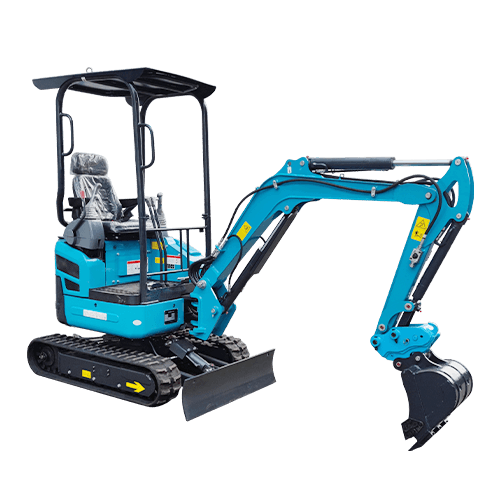
The utilization of rubber tracks offers a multitude of advantages, making them a preferred choice in various industries, especially in construction and heavy machinery. These benefits include:
- Enhanced Traction and Maneuverability: Rubber tracks provide superior traction on diverse surfaces, allowing for smoother movement and increased stability. This enhanced grip ensures better maneuverability, even in challenging terrains, compared to traditional steel tracks.
- Reduced Ground Damage: The design of rubber tracks minimizes surface damage, particularly on delicate surfaces like lawns, pavements, and roadways. This reduction in ground pressure helps preserve landscapes and surfaces during operations.
- Lower Noise Levels: Rubber tracks produce less noise compared to steel tracks, contributing to a quieter operational environment. This benefit is especially valuable in urban settings or areas where noise pollution is a concern.
- Improved Comfort and Stability: Operators experience a smoother ride with rubber tracks due to their shock-absorbing properties. This enhanced comfort reduces operator fatigue during extended use.
- Better Fuel Efficiency: Rubber tracks generally require less power to operate, leading to improved fuel efficiency compared to other track types. This results in cost savings and reduced environmental impact.
- Versatilidad: These tracks are versatile and adaptable, performing well in various conditions and terrains. They offer reliable performance across different applications, including construction, agriculture, landscaping, and more.
- Longer Lifespan: Properly maintained rubber tracks typically have a longer lifespan than other track materials. Regular maintenance ensures prolonged durability, reducing replacement frequency and associated costs.
- Ease of Replacement: When replacement is necessary, changing rubber tracks is often more straightforward and quicker compared to other track systems, minimizing downtime.
In summary, the benefits of using rubber tracks encompass improved traction, reduced ground damage, lower noise levels, increased comfort for operators, enhanced fuel efficiency, versatility, extended lifespan, and ease of replacement. These advantages make rubber tracks a preferred choice for various heavy machinery applications.
Types of Excavator Rubber Tracks
Excavator rubber tracks come in various designs and compositions, each tailored to specific needs and operating conditions. Understanding the different types can help in selecting the most suitable tracks for specific applications:
- Continuous Rubber Tracks: These tracks consist of a continuous rubber belt without joints or seams along its length. They offer a smoother ride and better weight distribution, reducing ground pressure. Continuous tracks are ideal for maneuverability and versatility across different terrains.
- Steel-Reinforced Tracks: Incorporating steel cables or plies within the rubber composition, these tracks prioritize durability and longevity. The steel reinforcement enhances resistance to punctures, tears, and wear, making them suitable for rugged and abrasive terrains.
- Hybrid Tracks: Combining the benefits of both continuous rubber and steel-reinforced tracks, hybrid tracks offer a balanced solution. They feature a blend of materials to optimize durability, traction, and flexibility, catering to varied working conditions.
- Block Pattern Tracks: These tracks have a distinctive tread pattern with blocks or lugs, providing enhanced traction in muddy or soft terrains. They excel in maintaining grip and preventing slippage, making them suitable for challenging environments.
- Smooth Tread Tracks: Contrary to block pattern tracks, smooth tread tracks have a flat surface without prominent lugs. They are preferred for applications where minimal ground disturbance is crucial, such as on delicate surfaces or pavements.
- Wide and Narrow Tracks: Tracks vary in width, offering options for specific requirements. Wide tracks distribute weight over a larger surface area, reducing ground pressure, while narrow tracks provide better maneuverability in confined spaces.
- Reversible Tracks: These tracks have a reversible design, allowing for extended use by flipping them when one side wears out. This feature maximizes track lifespan and minimizes replacement frequency.
Factors to Consider When Choosing Rubber Tracks
Selecting the right rubber tracks for excavators involves evaluating several crucial factors to ensure optimal performance and longevity. Consider the following aspects before making a decision:
- Size and Dimensions: Matching the track size precisely to the excavator’s specifications is essential. The correct width, pitch, and link count ensure proper fitting and functionality, preventing issues like slippage or misalignment.
- Durability and Longevity: Assess the track’s construction and material composition. Steel-reinforced tracks offer increased durability against wear, tear, and punctures, while continuous rubber tracks provide a smoother ride but might require more frequent replacement.
- Terrain Compatibility: Consider the type of terrain the excavator will primarily operate on. Different tracks perform better on specific surfaces; for instance, block pattern tracks excel in muddy conditions, while smooth tread tracks are suitable for delicate surfaces.
- Load Capacity: Ensure that the chosen rubber tracks can support the weight and workload of the excavator. Opt for tracks with a load capacity suitable for the intended applications and operational demands.
- Traction and Grip: Evaluate the track’s tread pattern and design to ensure optimal traction. Tracks with deeper lugs or a specialized tread pattern offer better grip on various surfaces, enhancing stability and maneuverability.
- Maintenance Requirements: Consider the maintenance needs of the tracks. Some tracks might require more frequent inspections, adjustments, or cleaning routines to maintain optimal performance and longevity.
- Cost and Budget: Balance the initial cost with the long-term benefits and durability of the tracks. While high-quality tracks might have a higher upfront cost, they often provide better value through extended lifespan and reduced maintenance expenses.
- Manufacturer’s Reputation: Choose tracks from reputable manufacturers known for quality and reliability. Warranty, customer support, and availability of replacement parts are crucial considerations.
- Compatibility with Undercarriage Components: Ensure compatibility with other undercarriage components like rollers, idlers, and sprockets. Compatibility issues could affect the excavator’s overall performance and efficiency.
Maintenance Tips for Excavator Rubber Tracks
Proper maintenance of excavator rubber tracks is crucial to ensure optimal performance, longevity, and cost-effectiveness. Follow these essential maintenance tips:
- Regular Cleaning: Clean the rubber tracks after each use to remove debris, mud, and other materials that can accumulate. Use a pressure washer or a hose with mild detergent to prevent dirt buildup.
- Inspect for Damage: Before and after operation, conduct thorough visual inspections of the tracks. Look for cuts, tears, or signs of wear. Promptly address any damages to prevent further deterioration.
- Maintain Correct Tension: Ensure the tracks are properly tensioned according to the manufacturer’s guidelines. Over-tensioning or under-tensioning can lead to premature wear or track slippage. Regularly check and adjust tension as needed.
- Align Tracks Properly: Misaligned tracks can cause accelerated wear and affect the excavator’s stability. Regularly check and adjust track alignment to prevent uneven wear on the tracks and undercarriage components.
- Avoid Sharp Turns and Abrasive Surfaces: Minimize sudden, sharp turns and avoid operating on abrasive surfaces whenever possible. These actions can accelerate track wear and lead to premature damage.
- Lubricate Undercarriage Components: Ensure proper lubrication of undercarriage components, such as rollers, idlers, and sprockets. Well-lubricated parts reduce friction and extend the life of rubber tracks.
- Inspect Track Fasteners: Periodically check the track fasteners, such as bolts and nuts, for tightness. Loose fasteners can cause track misalignment and lead to potential track failure.
- Avoid Excessive Speed: Operating the excavator at excessive speeds can cause unnecessary strain on the rubber tracks and undercarriage components. Maintain moderate speeds for optimal track longevity.
- Follow Manufacturer’s Guidelines: Adhere to the manufacturer’s recommended maintenance schedule and guidelines specific to the rubber tracks installed on the excavator.
- Store Properly: When the excavator is not in use, park it on a flat, clean surface. Avoid prolonged exposure to direct sunlight or harsh weather conditions, as these factors can degrade the rubber tracks.
Cost Efficiency of Rubber Tracks
Investing in rubber tracks for excavators or heavy machinery might entail a higher initial cost compared to alternative track options, such as steel tracks. However, the long-term cost efficiency and overall value that rubber tracks offer make them a preferred choice for many operators. Consider the following factors contributing to their cost efficiency:
- Reduced Ground Damage: Rubber tracks distribute the machine’s weight more evenly, minimizing ground pressure. This characteristic significantly reduces surface damage, making them ideal for delicate terrains like lawns, pavements, and roads. Lower ground damage translates to decreased repair and maintenance costs for surfaces.
- Longer Lifespan: With proper maintenance, rubber tracks often have a longer lifespan compared to alternative track materials. Their durability against wear, tear, and punctures contributes to fewer replacements, reducing downtime and replacement expenses.
- Lower Maintenance Costs: Rubber tracks generally require less maintenance compared to steel tracks. While regular cleaning and tension adjustments are necessary, they typically involve fewer intricate maintenance routines, leading to reduced maintenance expenses over time.
- Eficiencia de combustible: Rubber tracks tend to offer better fuel efficiency compared to heavier steel tracks. The reduced power required to operate rubber tracks can result in cost savings in fuel expenses, especially during extended periods of use.
- Reduced Wear on Undercarriage Components: The softer nature of rubber tracks leads to less wear on undercarriage components like rollers, idlers, and sprockets. This minimizes the need for frequent replacements or repairs on these parts, ultimately reducing maintenance costs.
- Versatility and Adaptability: Rubber tracks are versatile and adaptable to various terrains and working conditions. Their ability to perform well in diverse environments eliminates the need for frequent track changes, optimizing operational efficiency and saving time and resources.
- Resale Value: Excavators or machinery equipped with rubber tracks often hold better resale value due to their reputation for being more versatile, causing less ground damage, and having a longer lifespan compared to alternatives.
Innovations in Excavator Track Technology
The evolution of excavator track technology has witnessed significant advancements aimed at enhancing efficiency, performance, and sustainability in heavy machinery. Some notable innovations include:
- Telematics and Tracking Systems: Modern rubber tracks now integrate advanced telematics and tracking systems. These embedded technologies provide real-time monitoring of track performance, operating conditions, and maintenance needs. Operators can track usage data, monitor track health, and schedule timely maintenance, optimizing overall performance and minimizing downtime.
- Eco-Friendly Materials and Designs: Manufacturers are increasingly focusing on eco-friendly materials and designs for rubber tracks. Incorporating recycled materials or bio-based components reduces environmental impact while maintaining durability and performance. Sustainable track options align with industry efforts toward greener practices and reduced carbon footprint.
- Enhanced Durability and Longevity: Ongoing research and development aim to improve the durability and lifespan of rubber tracks. Innovations in track compounds and reinforcement materials result in tracks that withstand harsh conditions, resist wear and tear, and offer extended service life, reducing replacement frequency.
- Improved Traction and Stability: Advancements in track tread patterns and designs enhance traction and stability across various terrains. Innovative lug designs and tread configurations maximize grip and minimize slippage, ensuring better maneuverability and efficiency in challenging environments.
- Noise Reduction Technology: Manufacturers are developing rubber tracks with noise reduction features. These tracks minimize operational noise levels, contributing to a quieter working environment. Reduced noise pollution benefits both operators and surrounding areas, particularly in urban settings.
- Self-Cleaning Tracks: Innovative track designs incorporate self-cleaning features to prevent debris buildup. Enhanced track profiles and materials facilitate the automatic shedding of mud, rocks, and other materials, maintaining optimal track performance without manual intervention.
- Adaptive Track Systems: Some advanced track systems adapt to changing conditions. These systems adjust track tension, width, or other parameters automatically based on terrain or operating requirements, optimizing performance without manual adjustments.
- Integrated Wear Monitoring: Some tracks feature built-in sensors or indicators that monitor wear and provide predictive maintenance alerts. Early detection of wear allows proactive maintenance, preventing unexpected failures and minimizing downtime.
Case Studies: Real-life Applications

- Construction Industry Success Story: In a bustling metropolitan area, a construction company adopted excavators equipped with rubber tracks for urban development projects. The rubber tracks’ reduced ground pressure proved invaluable in preserving existing infrastructure while enabling efficient excavation and material handling. The versatility of the tracks allowed seamless movement across diverse terrains, from paved roads to soft soil areas, without causing surface damage. This adoption significantly minimized project costs associated with repairing damaged surfaces, showcasing the practicality and cost-effectiveness of rubber tracks in urban construction.
- Agricultural Innovation: A farming cooperative embraced rubber tracks on their excavators for agricultural applications. These tracks facilitated smooth maneuvering through fields and orchards, minimizing soil compaction and preserving crop health. The reduced ground disturbance enabled precision work, such as irrigation system installation and land preparation, without affecting the soil structure. The rubber tracks’ adaptability across varying terrains optimized farming operations, resulting in increased efficiency and reduced environmental impact.
- Landscaping and Earthmoving Excellence: A landscaping company invested in excavators equipped with rubber tracks for their landscaping and earthmoving projects. These tracks provided superior traction and stability, allowing precise grading and shaping of terrain without damaging lawns or delicate landscapes. The minimized ground pressure prevented rutting and soil disturbance, maintaining the aesthetic appeal of the areas under development. The versatility of rubber tracks enabled seamless transitions between different landscaping tasks, showcasing their value in creating visually appealing outdoor spaces.
- Forestry Industry Adaptation: In forestry applications, rubber tracks on excavators have proven beneficial for tasks like land clearing and tree removal. The tracks’ reduced ground disturbance helped protect sensitive forest floors, minimizing ecological impact during operations. The excavators equipped with rubber tracks navigated through dense vegetation and uneven terrain with ease, improving accessibility while maintaining environmental sustainability. This adoption showcased the tracks’ adaptability in forestry operations, promoting responsible land management practices.
Future Trends in Excavator Rubber Tracks
Anticipated Evolution of Excavator Rubber Tracks
The trajectory of excavator rubber tracks is poised for a remarkable transformation in the foreseeable future. Advancements in materials science coupled with cutting-edge engineering methodologies are set to redefine the landscape of these essential components in the construction industry.
One of the key avenues of evolution lies in the enhancement of durability and longevity. Manufacturers are heavily investing in research and development to devise rubber track compositions that can withstand extreme conditions, resist wear and tear, and endure prolonged usage without compromise. This push toward durability aims to mitigate downtime, reduce maintenance costs, and ultimately bolster operational efficiency for excavator owners and operators.
Moreover, there is a notable shift toward sustainability within the industry. Efforts are underway to explore eco-friendly materials that retain the robustness required for heavy-duty applications. The development of recyclable or biodegradable rubber track options is gaining traction, aligning with the global endeavor to minimize environmental impact across all sectors.
Another significant trend shaping the future of excavator rubber tracks revolves around smart technology integration. Innovations incorporating sensors, data analytics, and predictive maintenance capabilities are on the horizon. These technological advancements promise to revolutionize track monitoring, enabling real-time insights into track condition, wear patterns, and potential issues. This proactive approach to maintenance could significantly reduce downtime and enhance overall safety protocols on construction sites.
Furthermore, the design aspect of rubber tracks is undergoing refinement. Engineers are exploring novel geometries and configurations to optimize traction, stability, and performance across diverse terrains.
Conclusión
Excavator rubber tracks have emerged as a fundamental component revolutionizing construction machinery. Their multifaceted benefits, diverse types, cost efficiency, and continual innovation showcase their pivotal role in modern excavators, promising a future of enhanced efficiency and sustainability.
Preguntas frecuentes
- Are rubber tracks suitable for all terrains?
Goma tracks are versatile and suitable for various terrains, but selecting the right type based on the terrain is crucial for optimal performance. - How often should rubber tracks be inspected?
Regular inspections are recommended, ideally before and after each use, to identify and address any potential issues promptly. - Can rubber tracks be retrofitted on existing excavators?
In many cases, rubber tracks can be retrofitted, but compatibility and size considerations need to be assessed beforehand. - Do rubber tracks require special maintenance compared to steel tracks?
While maintenance is necessary for both, rubber tracks might need more attention to ensure proper tension and alignment. - What advancements can we expect in the next generation of rubber tracks?
Future advancements may focus on using more sustainable materials, improved telematics, and further reducing environmental impact.

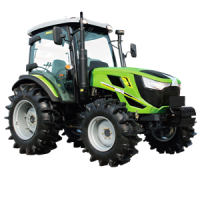
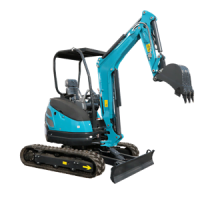
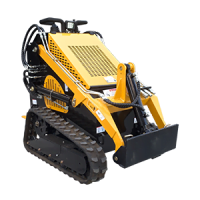
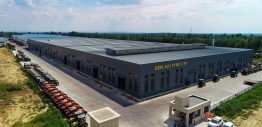
-1.png)